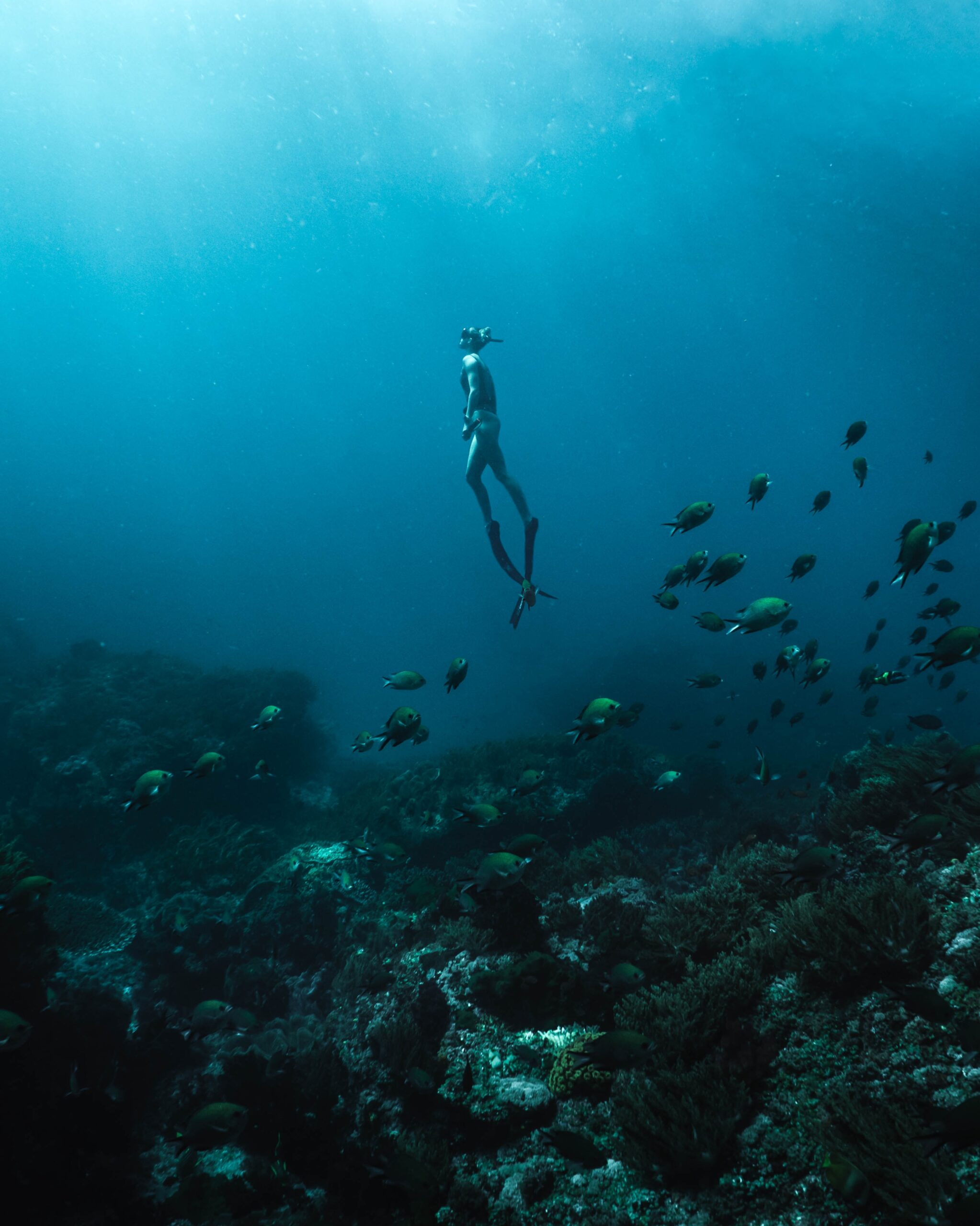How Deep Can An Open Water Diver Go?
Samuel Johnson March 25th, 2021 Posted In: Articles Tags: SCUBA
How Deep Can An Open Water Diver Go?
How deep can an open water diver go? 40 feet, 60 feet, or 100 feet? How deep an open water diver can go depends on a variety of factors. Safety is the main issue which is why regulatory training programs are offered to educate divers. With safety in mind, depth limits are in place to gradually introduce new divers to the dangers of SCUBA diving and how to respond appropriately to emergency situations.
The deeper one dives underwater the greater the pressure becomes. Air will run out faster at deeper depths, and all the associated diving risks grow. It is important to carefully plan your dives so you know how much time you have at any given depth. You don’t want to run out of air! Once you descend to a certain depth you have to use a different mixture of gasses to keep going.
You will also need to plan decompression stops to avoid the bends. The bends or decompression sickness is when gas bubbles form in various areas of your body when you ascend too quickly after a dive. This is only one of the many dangers a SCUBA diver might face which is why training is so important.
What is an Open Water Diver?
An open water diver is someone who has earned a certification from a regulatory agency like PADI or NAUI. The training and experience gained from taking a SCUBA course generally enable someone to dive up to the maximum recommended depth for their certification level. SCUBA or Self Contained Underwater Breathing Apparatus diving is taught all over the world by various agencies besides PADI and NAUI like the SCUBA Schools International (SSI). You can read more about SCUBA diving safety rules here.
 How Deep Can A Certified Open Water Diver Go?
How Deep Can A Certified Open Water Diver Go?
Generally, how deep you can dive starts with your age and training level. PADI restricts those under the age of 12 to 40 feet while those over 12 taking the Open Water course can go as far as 60 feet. One important consideration is that your air supply will last longer at shallower depths, meaning you can go on longer dives at shorter depths. After completing the required training, divers can take additional courses to learn how to safely descend past 60 feet.
PADI offers an Advanced Open Water course designed to teach the skills and knowledge needed to go as far as 100 feet underwater. Depending on the person, these depths can cause nitrogen narcosis, a drunk-like feeling which inhibits cognitive function temporarily. When you are 100 feet underwater, even tiny mistakes can be catastrophic. Once you are properly certified and are off on your own and planning dives, you can safely dive to depths of 100 feet.
Generally, open water divers do not exceed 130 feet (40 meters) because past those depths requires special training and equipment to proceed safely. Your air supply will run out faster as you go deeper into the ocean. Near the surface, with little exertion, you may enjoy an hour or more of SCUBA time. As you drop down in depth, that SCUBA time drops drastically. Your safe time at 60 to 100 feet would be much shorter but also depends on your tank size and other factors.
How Deep Should An Open Water Diver Go?
Now that you know the maximum depths taught by PADI and other SCUBA diving regulatory agencies, there are other considerations that will impact how deep you can dive. Adverse weather conditions can make SCUBA diving extremely unsafe, especially entering or exiting via the shore. Choppy waves and underwater currents kick up sand and other debris making it difficult to see underwater. Not worth the risk to your life. On days that are great for diving, you will find the most abundant sea life close to shores and coral reefs above 100 feet. However, if you are interested you can also take courses on cave diving, wreck diving, and tri-mix or alternative air ratios to descend past 130 feet. Practice within the recommended depths to gain experience and comfort operating your SCUBA gear before attempting to dive deeper.
One major issue impacting how deep you can dive is the gear you have on. A wetsuit is a critical component that allows divers to reach deeper depths. Hypothermia can quickly set in as the ocean drains your body heat. There are some deep dives that take advantage of underwater currents to reduce your need to swim. This reduces your physical exertion and thus your air usage, allowing for longer deep dives. Colder water may require a more advanced wetsuit or even a drysuit. The main difference between the two is that a wetsuit traps a layer of water against your skin while a drysuit traps a layer of air. It is easier for your body to keep that layer between you and the suit warm than to try and heat up the whole ocean!
How Deep Can An Open Water Diver Go?
A properly outfitted diver in training can generally descend to 60 feet if they are old enough. Divers with Open Water and Advanced Open Water certifications from PADI can descend to 100 feet and as far as 130 feet. There are amazing things to see under the water at various depths. Keep in mind that the deeper you plan to go, the colder it can get. Wetsuits come in various thickness levels so you can pick the right one for the water you will be SCUBA diving in. You may be interested in reading about the other benefits of a wetsuit next.

